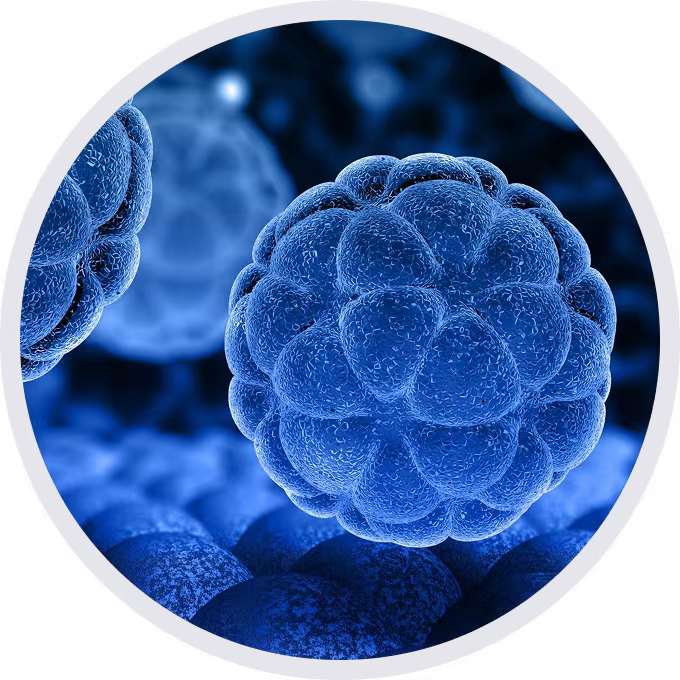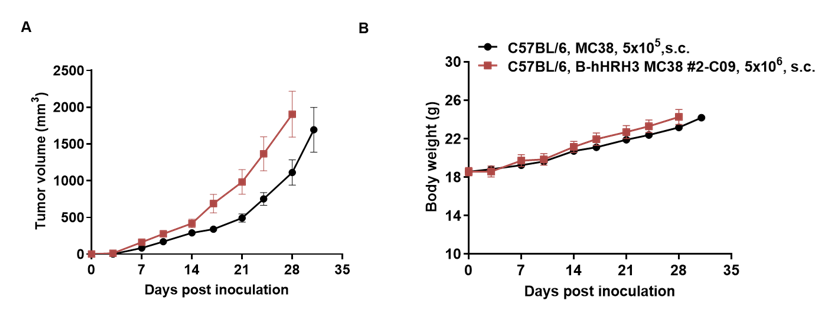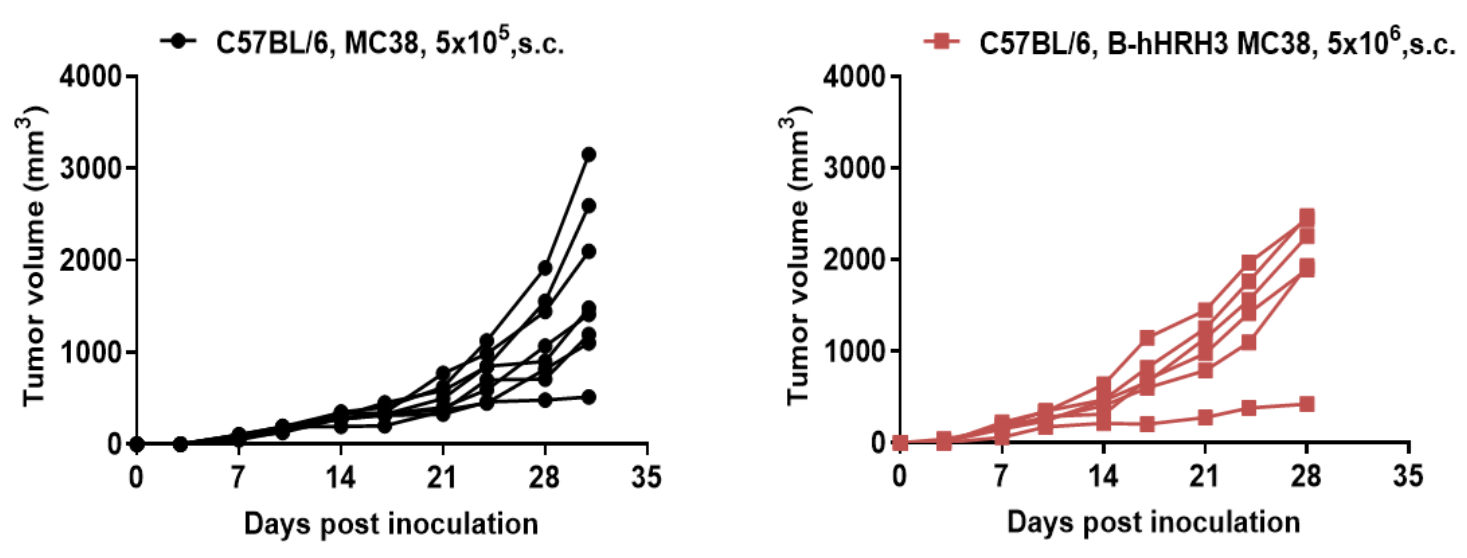


• 321956

| Product name | B-hHRH3 MC38 |
|---|---|
| Catalog number | 321956 |
| Strain background | C57BL/6 |
| Aliases | HH3R; GPCR97 |
| Tissue | Colon |
| Disease | Colon carcinoma |
| Species | Mouse |
| Application | B-hHRH3 MC38 |
The mouse Hrh3 gene was replaced by human HRH3 coding sequence in B-hHRH3 MC38 cells. Human HRH3 is highly expressed on the surface of B-hHRH3 MC38 cells.

Subcutaneous homograft tumor growth of B-hHRH3 MC38 cells. B-hHRH3 MC38 cells (5x106) and wild-type MC38 cells (5x105) were subcutaneously implanted into C57BL/6 mice (female, 5-week-old). Tumor volume and body weight were measured twice a week. (A) Average tumor volume ± SEM. (B) Body weight (Mean± SEM). Volume was expressed in mm3 using the formula: V=0.5 X long diameter X short diameter2. As shown in panel A, B-hHRH3 MC38 cells were able to establish tumors in vivo and can be used for efficacy studies.

B-hHRH3 MC38 tumor cells growth of individual mice. B-hHRH3 MC38 cells (5x106) and wild-type MC38 cells (5x105) were subcutaneously implanted into C57BL/6 mice (female, 5-week-old). As shown in panel, B-hHRH3 MC38 cells were able to establish tumors in vivo and can be used for efficacy studies.